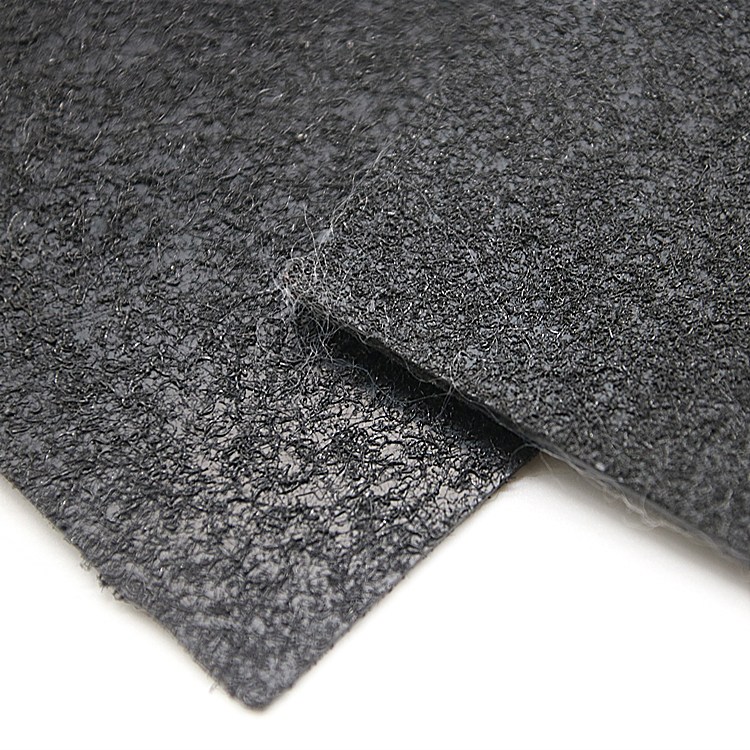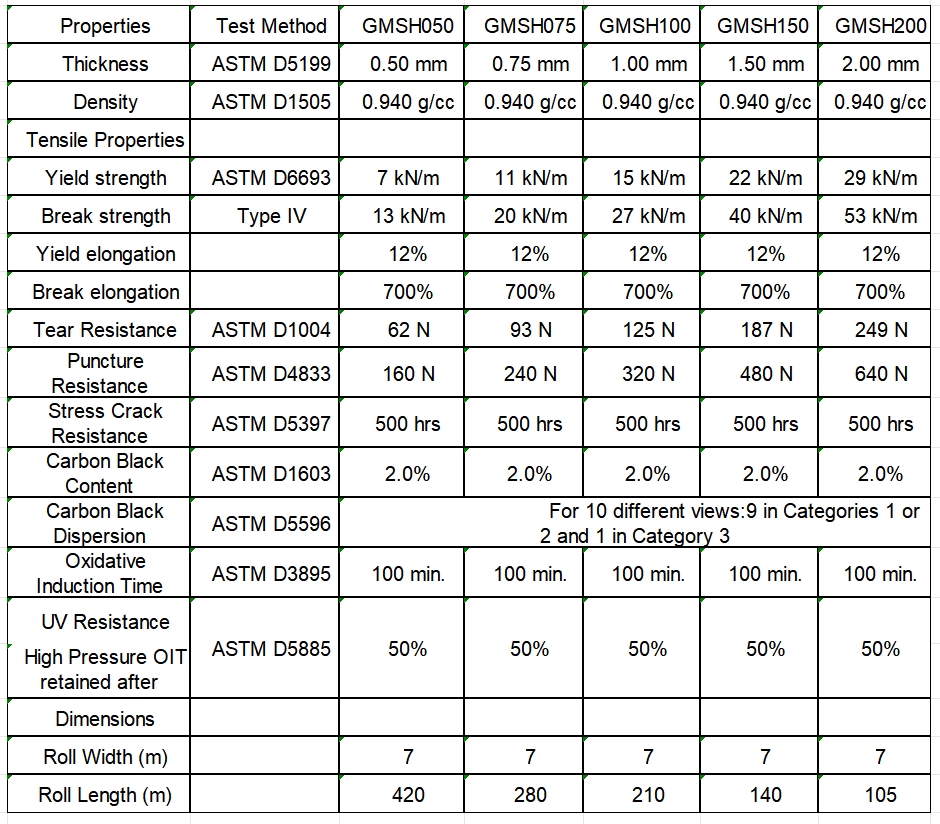糙面土工膜
粗いジオメンブレン
HDPE Rough Geomembrane
- Geocell
- Geomembrane
- Uniaxial geogrid
- Biaxial geogrid
- Geotextile
- EVOH Geomembrane
- Warp-knitted geogrid
- Geosynthetic Clay Liner
- Composite Geonet
- Self - adhesive waterproof membrane
- Permeable pipe
- Composite anti-permeability material
- Graebel Fix
- Safety net
- Weed control sheet
- Flexible container bag
- Dimpled Drainage Sheet
- Environmental Conservation Engineering
- Application of geomembrane in water conservancy
- Application of geomembrane in aquaculture
- Application of geomembrane in chemical industry
- Mining Engineering
- Geocell retaining wall construction method
- Geocell Surface Protection Construction Method
- Subgrade Reinforcement Construction Method
- Geocell - Slope protection method for cold regions
- Geotextiles in slope protection projects
- Project to Strengthen Weak Infrastructure
- Landfill Isolation Project
- Rental
Product Details
Rough geomembrane, also known as textured geomembrane, is a synthetic polymer-based impermeable liner with a rough or textured surface. It is primarily made from high-density polyethylene (HDPE) or linear low-density polyethylene (LLDPE), offering enhanced frictional properties and durability compared to smooth geomembranes.
Key Features:
• High Friction Resistance: The textured surface increases shear strength, improving stability on slopes and in geotechnical applications.
• Excellent Impermeability: Provides a strong barrier against water, chemicals, and contaminants.
• UV and Chemical Resistance: Withstands harsh environmental conditions, making it suitable for long-term use.
• Flexibility and Durability: Adaptable to different terrains and resistant to punctures and tears.
• Environmentally Friendly: Safe for containment applications, including landfill and water management projects.

Features
Landfill Liners and Caps
• Prevents leachate from contaminating soil and groundwater.
• Used as a cover system to reduce gas emissions and odor.
• Enhances slope stability with its high shear resistance.
Mining Industry
• Used as heap leach pads for metal extraction processes.
• Provides containment for mining tailings and wastewater ponds.
• Ensures environmental protection in hazardous waste storage.
Water Containment and Reservoirs
• Used in reservoirs, ponds, and canals to prevent seepage.
• Provides a durable and impermeable lining for irrigation storage.
• Reduces water loss due to permeability in artificial lakes.
Oil & Gas Industry
• Serves as secondary containment for petroleum storage tanks.
• Prevents spills from contaminating the surrounding environment.
• Used in drilling operations to contain drilling fluids.
Aquaculture & Fish Farming
• Creates safe, non-toxic environments for fish and shrimp farming.
• Reduces water loss and prevents contamination from the soil.
• Ensures long-lasting, efficient pond management.
Slope and Embankment Protection
• Stabilizes slopes and prevents soil erosion.
• Increases friction between soil and liner, preventing sliding failures.
• Commonly used in road embankments and dam constructions.
Wastewater Treatment Facilities
• Lines wastewater treatment lagoons and storage tanks.
• Prevents toxic and chemical waste seepage into the ground.
• Ensures long-term containment and durability in harsh
Tunnels and Underground Structures
• Used in tunnel waterproofing systems to prevent leakage.
• Enhances structural integrity by controlling groundwater seepage.
• Provides protection against chemical exposure in
Specification





